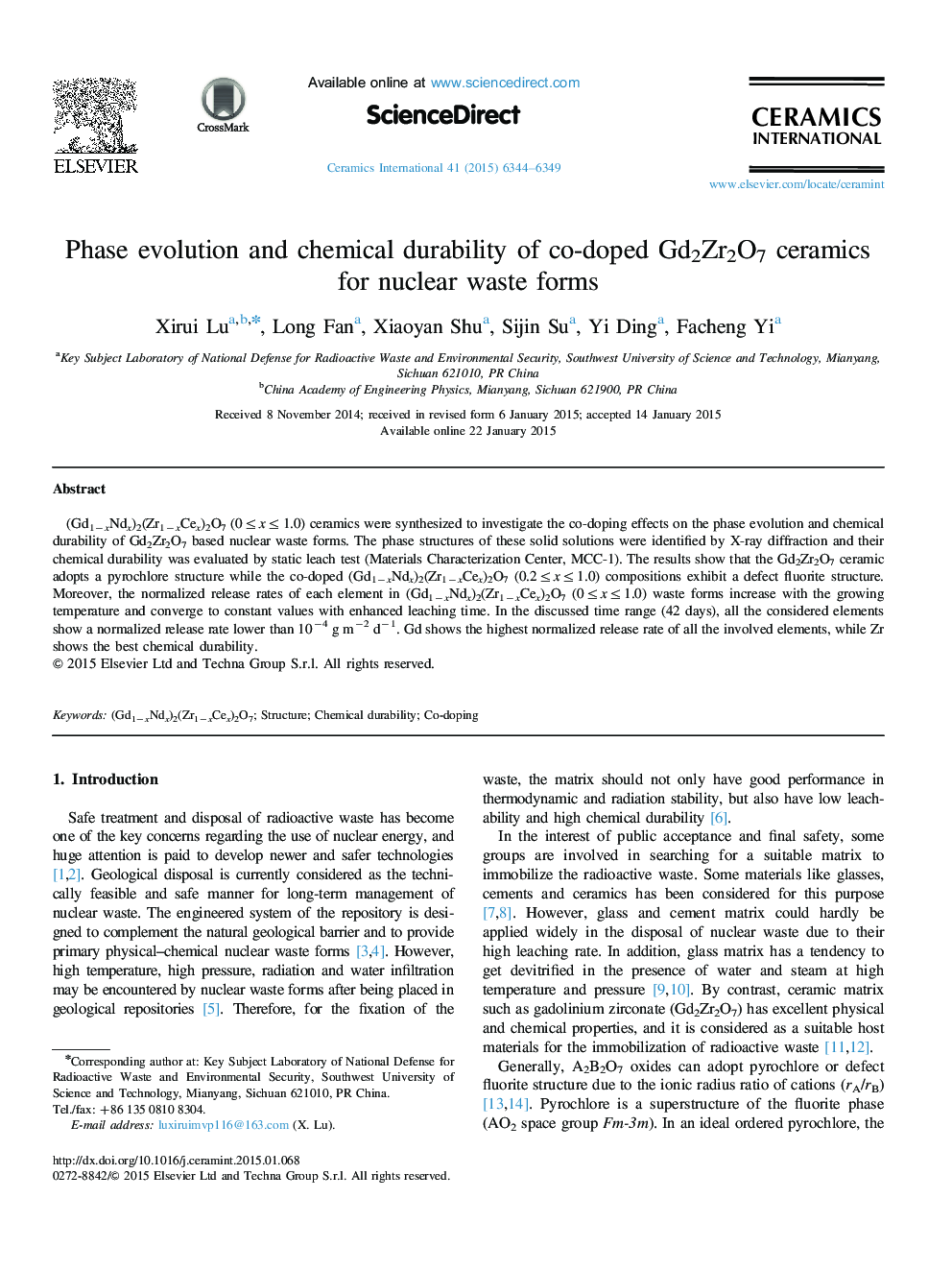| Article ID | Journal | Published Year | Pages | File Type |
|---|---|---|---|---|
| 1459838 | Ceramics International | 2015 | 6 Pages |
(Gd1−xNdx)2(Zr1−xCex)2O7 (0≤x≤1.0) ceramics were synthesized to investigate the co-doping effects on the phase evolution and chemical durability of Gd2Zr2O7 based nuclear waste forms. The phase structures of these solid solutions were identified by X-ray diffraction and their chemical durability was evaluated by static leach test (Materials Characterization Center, MCC-1). The results show that the Gd2Zr2O7 ceramic adopts a pyrochlore structure while the co-doped (Gd1−xNdx)2(Zr1−xCex)2O7 (0.2≤x≤1.0) compositions exhibit a defect fluorite structure. Moreover, the normalized release rates of each element in (Gd1−xNdx)2(Zr1−xCex)2O7 (0≤x≤1.0) waste forms increase with the growing temperature and converge to constant values with enhanced leaching time. In the discussed time range (42 days), all the considered elements show a normalized release rate lower than 10−4 g m−2 d−1. Gd shows the highest normalized release rate of all the involved elements, while Zr shows the best chemical durability.
